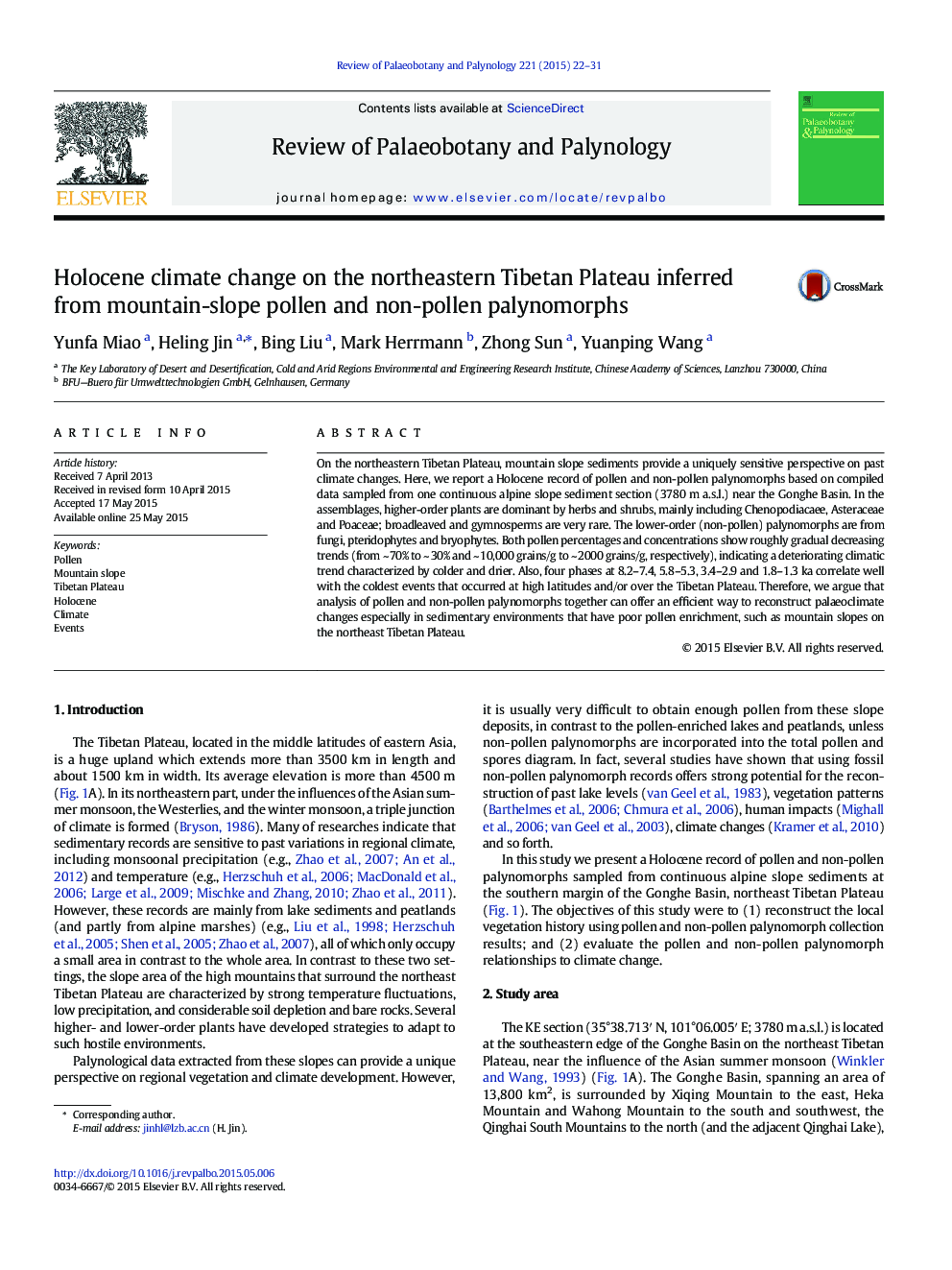| Article ID | Journal | Published Year | Pages | File Type |
|---|---|---|---|---|
| 6448684 | Review of Palaeobotany and Palynology | 2015 | 10 Pages |
Abstract
On the northeastern Tibetan Plateau, mountain slope sediments provide a uniquely sensitive perspective on past climate changes. Here, we report a Holocene record of pollen and non-pollen palynomorphs based on compiled data sampled from one continuous alpine slope sediment section (3780Â m a.s.l.) near the Gonghe Basin. In the assemblages, higher-order plants are dominant by herbs and shrubs, mainly including Chenopodiacaee, Asteraceae and Poaceae; broadleaved and gymnosperms are very rare. The lower-order (non-pollen) palynomorphs are from fungi, pteridophytes and bryophytes. Both pollen percentages and concentrations show roughly gradual decreasing trends (from ~Â 70% to ~Â 30% and ~Â 10,000Â grains/g to ~Â 2000Â grains/g, respectively), indicating a deteriorating climatic trend characterized by colder and drier. Also, four phases at 8.2-7.4, 5.8-5.3, 3.4-2.9 and 1.8-1.3Â ka correlate well with the coldest events that occurred at high latitudes and/or over the Tibetan Plateau. Therefore, we argue that analysis of pollen and non-pollen palynomorphs together can offer an efficient way to reconstruct palaeoclimate changes especially in sedimentary environments that have poor pollen enrichment, such as mountain slopes on the northeast Tibetan Plateau.
Related Topics
Physical Sciences and Engineering
Earth and Planetary Sciences
Palaeontology
Authors
Yunfa Miao, Heling Jin, Bing Liu, Mark Herrmann, Zhong Sun, Yuanping Wang,
